 |
| September 13, 2016 | Volume 12 Issue 34 |
Designfax weekly eMagazine
Archives
Partners
Manufacturing Center
Product Spotlight
Modern Applications News
Metalworking Ideas For
Today's Job Shops
Tooling and Production
Strategies for large
metalworking plants
Wheels: (A little end-of-summer fun reading)
Elvis' BMW 507 has left the building -- and returned!
The story of Elvis' long-lost BMW 507 and its restoration is full of twists and turns. This is not simply a tale about the young GI Elvis Presley. It is also about the experienced "hillclimb champion" Hans Stuck, kissable lips daubed on white paint, a retired space engineer and a warehouse for pumpkins, a Chevy engine that was much too big, rubberized coconut mats, and door handles printed in a 3D process.
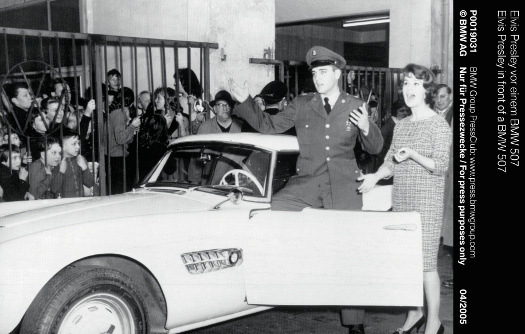
Elvis Presley in front of a BMW 507. [All images courtesy: BMW Group Classic]
When "the King of Rock and Roll" was doing his military service in Germany, he cruised around in style. The young GI Elvis Presley, when he "left the building," often did so in his two-seater BMW 507 convertible. But what ever happened to that car?
The BMW 507 has been one of the most exclusive and sought-after rarities in the model history of the brand, with just 254 automobiles produced between 1955 and 1959. Right after its world premiere at the Frankfurt International Motor Show in 1955, the two-seater created by designer Albrecht Graf Goertz was hailed in the press as the "Dream from the Isar." Celebrity owners like Alain Delon, Ursula Andress, and John Surtees contributed to the image of the roadster as a status symbol.
However, no other automobile of this model is shrouded in mythology like the BMW 507 once owned by Elvis Presley. This particular roadster was believed to have been lost for almost 50 years. In fact, there was not even certainty about the chassis number of the car driven by "the King." There were also doubts about whether Elvis Presley had ever transported the car back to the United States after he finished his military service in Germany, and nobody knew anything about the subsequent ownership of the vehicle.
But wouldn't it be something to find out ...
On the trail of a story about a car -- and the car itself
In 2006, American journalist Jackie Jouret, who works for "Bimmer" magazine in California, was already searching through contemporary reports for Elvis' BMW 507 and relevant literature going into the history of this model. During the course of her work to research and write an article, she uncovered an essential detail: Various sources highlighted the fact that the BMW 507 delivered to Elvis Presley in Germany was not a brand new automobile but had previously been used by racing driver Hans Stuck.
Between May and August 1958, the racing driver known as the "Hillclimb Champion" won a number of hillclimbs in Germany, Austria, and Switzerland -- in a white BMW 507 with chassis number 70079 and registration plate M-JX 800. It is also a known fact verified by photographs that this roadster rolled off the assembly line on Sept. 13, 1957. A few days later, it was exhibited at the Frankfurt International Motor Show and repeatedly used for test drives by the press.
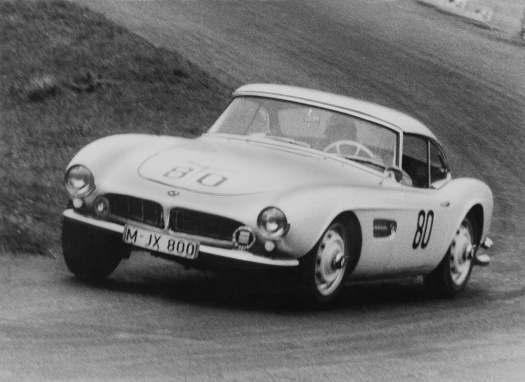
Hans Stuck achieves a class win at the "Grosser Bergpreis von Deutschland" Hillclimb at Schauinsland near Freiburg in 1958 with the BMW 507, VIN 70079.
As early as October 1957, Hans Stuck presented the car at the London Motor Show and then drove the roadster through Belgium, where he presented it to King Baudouin, before motoring down to the Turin Motor Show. And as if that were not enough, in the summer of 1958, Stuck's BMW 507 won the automobile beauty competition in Wiesbaden and then played a role in the Bavaria film studio for the feature film "Hula-Hopp, Conny" with Cornelia Froboess and Rudolf Vogel.
This vehicle had been carefully serviced at BMW after every race, the engine had been upgraded, and a new gearbox fitted when it ended up with a dealer in Frankfurt in the autumn of 1958. The young U.S. soldier Presley was 23 at the time, and he came along and took the car for a spin as a test drive. He was immediately impressed by it and decided to buy the vehicle. Photos taken at the time show that export license plates had already been fitted to the BMW 507.
Later on, it was given a registration from the U.S. military that changed every year. This was part of the reason why subsequent identification of the vehicle proved to be complicated as the years piled up. The experts from the BMW Group Classic Archives were only absolutely certain about its provenance when they came across the insurance proposal from December 1958 that contained the chassis number 70079 alongside registration of the keeper of the vehicle as Elvis Aaron Presley.
Pampered in Germany, radically modified in the USA
Elvis Presley used the BMW 507 to drive between his home in Bad Nauheim and the U.S. Army Base in Friedberg. His female fans always kept a close eye on him, and he was often mobbed by them. The paintwork of the roadster was frequently daubed with messages of love painted in lipstick. These signs of adoration were by no means unusual for a rock star, but they were an embarrassment to Presley as a young U.S. soldier. A new uniform in the form of a red paint job solved the problem for the vehicle.
In March 1960, Elvis Presley ended his military service in Germany. Back on American highways, he must have abandoned sheer driving pleasure in an open-top BMW since a few months later he traded in the red roadster bearing chassis number 70079 with a Chrysler dealer in New York. The dealer in turn sold the car for the ridiculously low price (from today's perspective) of $4,500 to radio moderator Tommy Charles.
Charles took the automobile to his home town of Birmingham, AL, where a very successful racing career began, although this move was very questionable when it came to the issue of authenticity. The BMW 507 was fitted with a Chevrolet engine in preparation for action on the race track. This took up so much space that parts of the front frame carrier had to be cut out. The gearbox and the rear axle, and the instruments in the cockpit, were replaced. Charles won a race in Daytona Beach, FL, with the radically modified roadster, and he lined up on the starting grid in several more competitions before selling the vehicle in 1963.
Two more changes of ownership followed, and the BMW 507 then went to California. Space engineer Jack Castor acquired the car in 1968, and he used it occasionally as a runabout before deciding to put the car into storage for a subsequent restoration. Castor was a passionate collector of historic bicycles, and over the years he also amassed an impressive collection of classic automobiles in Half Moon Bay to the south of San Francisco. He got involved with several classic car clubs and delved into the history of the vehicles he had acquired.
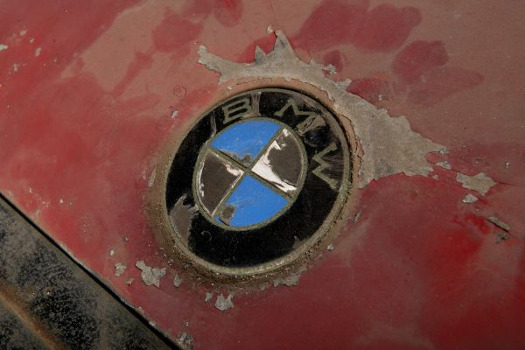
The ‘Holy Grail' in the pumpkin warehouse
Castor also put together a comprehensive dossier on his BMW 507. Meanwhile, the engineer had gone into retirement and one day he happened to see the article in "Bimmer" magazine. Castor wrote to the author, told her about the BMW 507 with chassis number 70079 that he owned, and invited her over to look at the vehicle. He was aware that he was the owner of the racing car driven by "hillclimb champion" Hans Stuck, but up to then he had only been able to speculate about a potential connection with Elvis. Jackie Jouret, however, was absolutely certain about this issue. She accompanied Castor to a warehouse for pumpkins where the red BMW 507 was stored alongside other venerable vehicles.
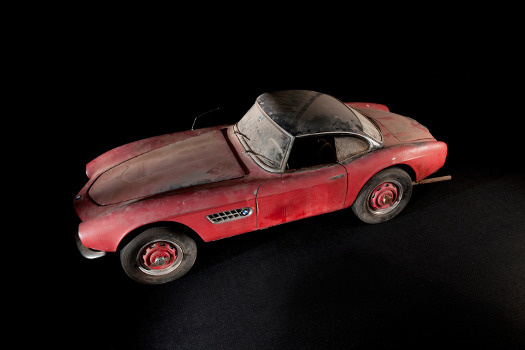
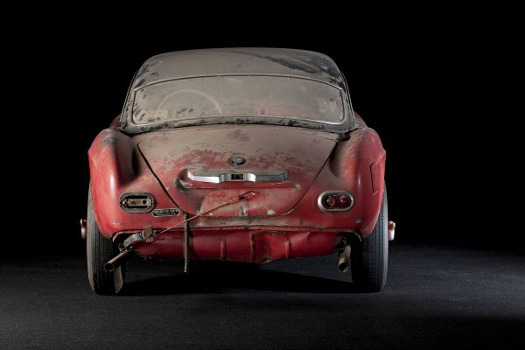
"Jack had tied down its engine bonnet with ropes," recalled the journalist when she looked back on the moment of discovery. "It took some time until we actually got the engine compartment open and identified the stamped chassis number: 70079, the Holy Grail among BMW numbers."
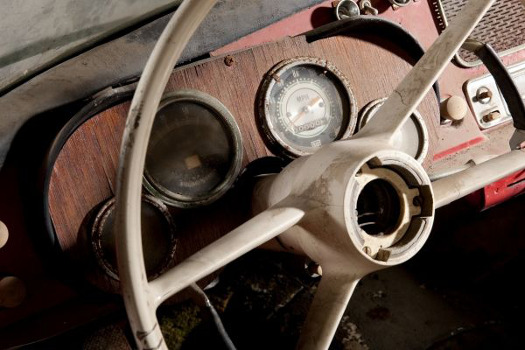
Castor had already collected a large number of parts carefully stowed in boxes for the planned restoration of the roadster to its original condition. What he lacked was an appropriate engine and the necessary time to see the project through. But then things started to happen. Jouret set up the contact with BMW Group Classic, where new information about the identity of the BMW 507 used by Elvis Presley in Germany was being gathered. This allowed the facts that had been researched in the United States to be confirmed.
Castor was not interested in making a fast buck out of the unexpected additional fame of his BMW 507. However, the contact with BMW Group Classic was strengthened. After several years and a number of discussions with the experts for restoring classic cars at BMW Group Classic, Klaus Kutscher and Axel Klinger-Köhnlein, an agreement was reached. Alongside the purchase of the vehicle by BMW Group Classic, it also included the authentic restoration of the car along the lines envisioned by Castor.
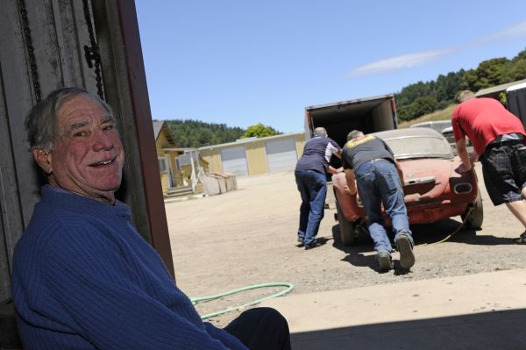
Jack Castor in his garage says goodbye to his BMW 507 in 2014.
Nights at the museum
The time had come around to spring 2014. The BMW 507 was shipped to Germany in a container, together with the spare parts collected by Castor. The first stop in Munich was the BMW Museum, where the roadster was presented to an admiring audience in the special exhibition "Elvis' BMW 507 -- lost and found." Work then began on restoration in the workshop of BMW Group Classic.
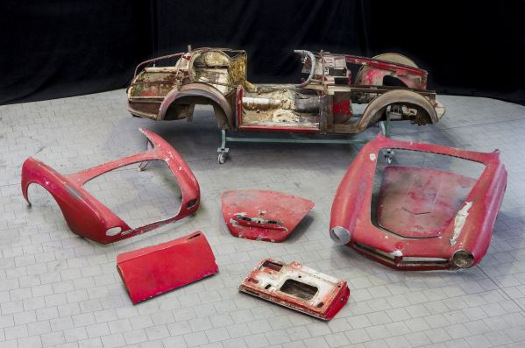
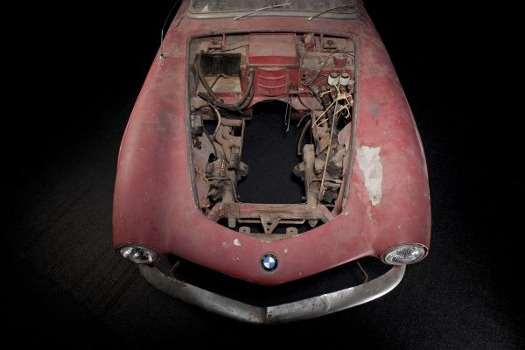
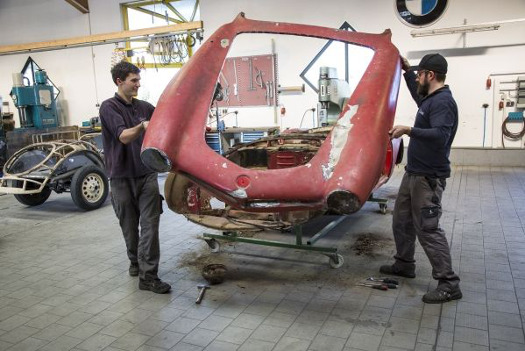
The condition of the two-seater really was a cause for concern. Although the original body parts and other components were virtually all present and intact, the roadster had lost its engine and gearbox. The rear axle was a "replacement part" of unknown origin, rust was eating away the floor assembly, the seats were worn, and there was no instrument panel. However, the fascination of a rare and beguilingly beautiful automobile outweighed all the inadequacies and deficiencies, augmented by the memory of Elvis Presley and his greatest hits. While the roadster came back to Munich to the tune of "Return to Sender," the solution was undoubtedly "It's Now or Never." A project managed by BMW Group Classic succeeded in restoring the automobile. In-house experts and external specialists joined forces to carry out the work and the result defined new benchmarks for the restoration of a BMW 507.
As was usual for projects of this nature, phase one was primarily destructive in nature. The vehicle was completely dismantled, a process that, in this special case, took an entire week, rather than the two days that had been originally planned. Initially, the aluminum body was separated from the floor assembly made of sheet steel. This was the only way of retaining as much of the original material as possible. The paint was then removed from the floor assembly in an acid bath and from the body in an alkaline bath. The engine had already been removed, and the remnants of the interior that remained had been set aside.
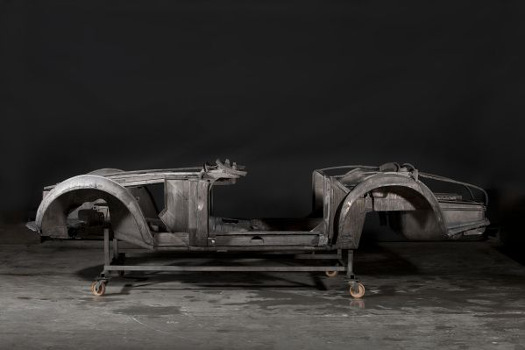
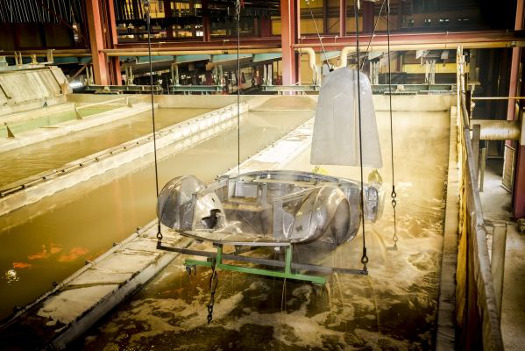
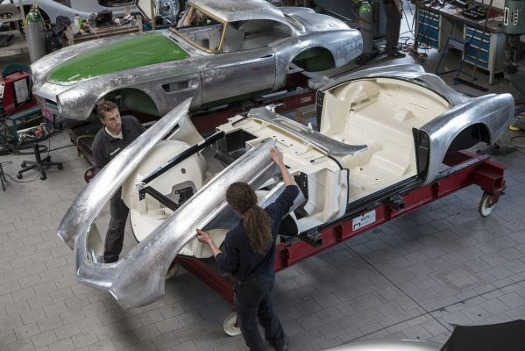
A lot of components had to be remanufactured from scratch because the stocks of original parts for the BMW 507 are limited -- even at BMW Group Classic. Traditional craftsmanship in the style of the 1950s was melded with high-tech production procedures of the modern world.
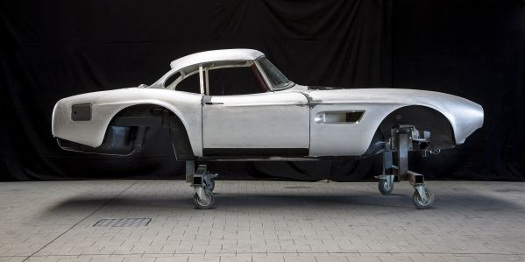
The instrument panel was newly cast on the basis of the original. The leather upholstery was created to precisely match the pattern shown in old photographs and catalogs. When the seats were reconstructed, it proved possible to use the original steel subframe for them after all the rust had carefully been removed. A rubberized coconut mat was then drawn over the steel springs. This natural material was already being used in the 1950s for series production of the BMW 507, alongside the overlaid felt and linen layers to make the seats as comfortable as possible.
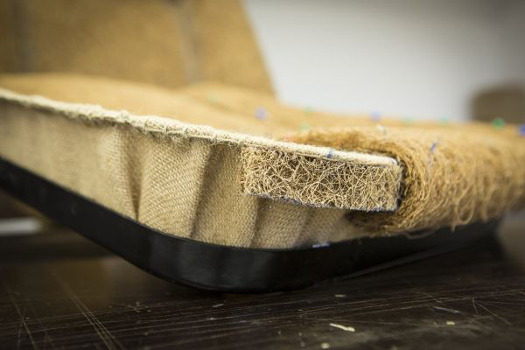
Window winders and door handles were remanufactured in an advanced, modern 3D-printing process based on the original dimensions. After producing a digital data set by 3D scan of the original part, a facsimile was generated with the help of additive manufacturing and mirror-finished afterward. By contrast, the rubber seal for the tank cover was reproduced in a conventional manufacturing procedure. Since this component, like many others in the BMW 507, had fallen prey to the ravages of time, a small series was produced. This means that roadster users are now able to source this spare part in the parts shop of BMW Group Classic.
The BMW 507 makes a comeback
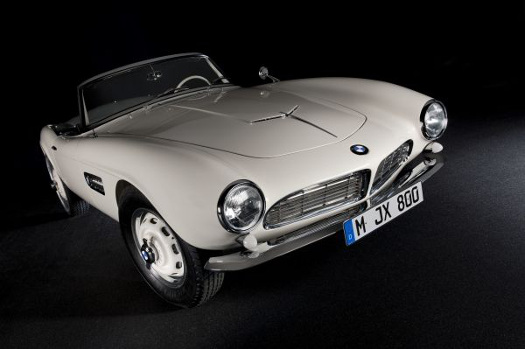
The engine for Elvis' BMW 507 was completely rebuilt from spare parts. The 3.2-liter V8 engine was reconditioned precisely in conformity with the original specifications of the car, but it was not given an engine number on account of the unavoidable but otherwise unusual use of old and new components. The front frame carrier, which had been cut down at an early stage, also had to be reproduced in its original geometry and integrated in the floor assembly. The wooden nailing strip for fixing the soft top in place was also reproduced using materials and processing methods in keeping with the 1950s.
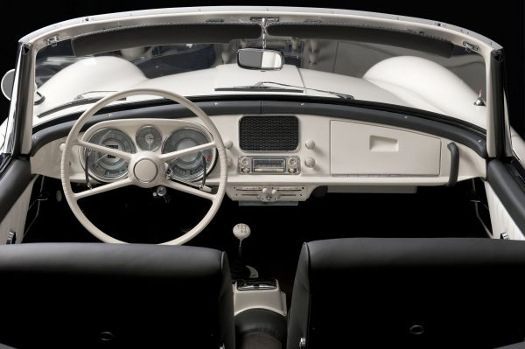
Maximum authenticity was also the objective in painting the vehicle. The BMW 507 is resplendent once again in Feather White.
The primer coat, the filler, and the top coat were not applied by the methods that are commonplace today. Rather, they were implemented in a procedure that corresponds to the technology in use some 60 years ago. This enabled the excessive color brilliance to be avoided, which is considered desirable nowadays but is inappropriate for classic cars.
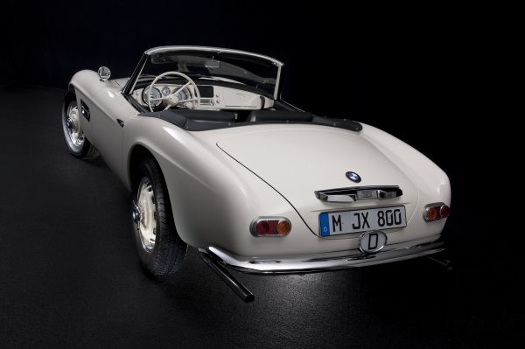
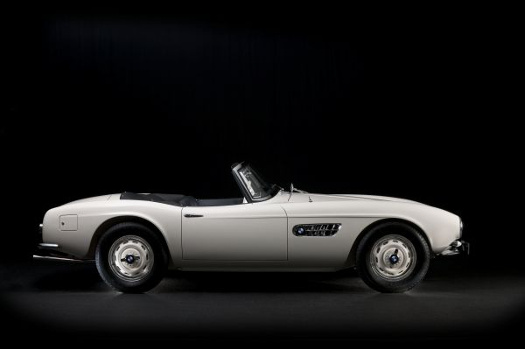
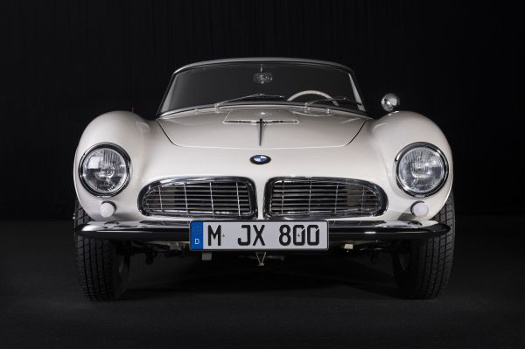
Similar to the reconstruction of the V8 engine and the use of true-to-original parts and production procedures, the selection of paintwork also corresponds precisely to the conditions defined by Jack Castor.
Right from the start, Castor wanted to restore the roadster to its original 1958 condition. The entire restoration took the BMW team almost two years. But Castor's aspiration to be able to see the BMW 507 through the eyes of "the King" remained unfulfilled. He passed away at the age of 77 in November 2014.
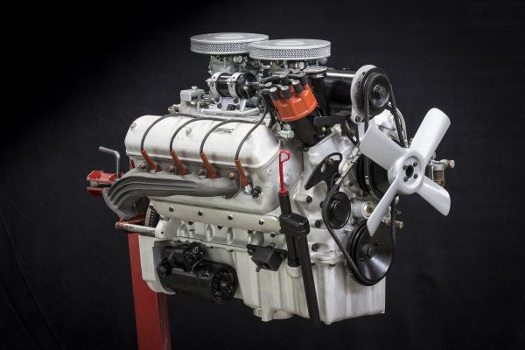
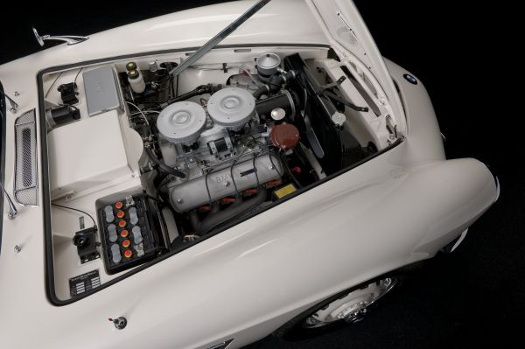
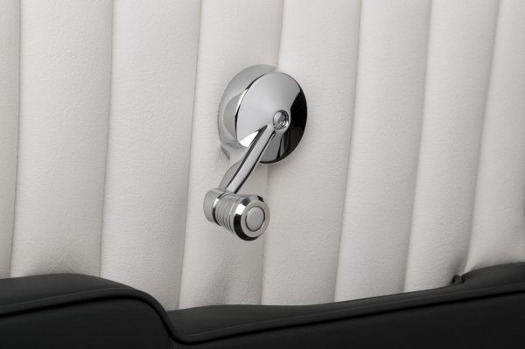
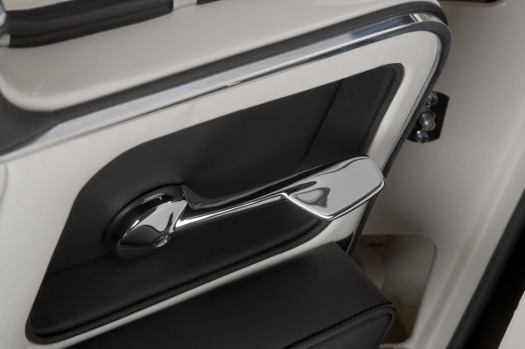
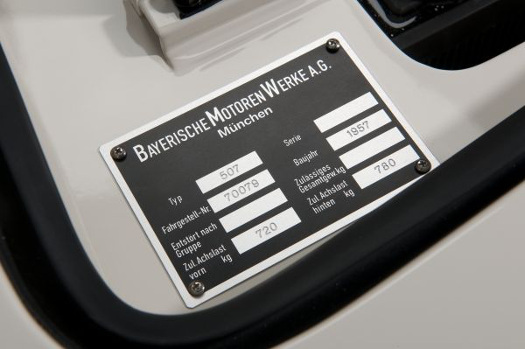
But Castor and his efforts to put back together pieces of history are not forgotten. He was remembered -- along with Elvis -- at Pebble Beach in California on Aug. 21, 2016. There, the restored BMW 507 with chassis number 70079 made its first public outing in years at the Concours d'Elegance classic car show, resplendent in its reincarnation and looking much like it did when soldier Elvis Presley took delivery of the car Dec. 20, 1958 -- with paintwork finished in Feather White, a 150-hp V8 aluminum engine under the hood, center-lock rims, black-and-white interior, and a Becker Mexico radio.
The BMW 507 was presented not simply as the automobile of the "the King," but also as the legacy of an engineer named Jack Castor and a masterpiece of BMW Group Classic.
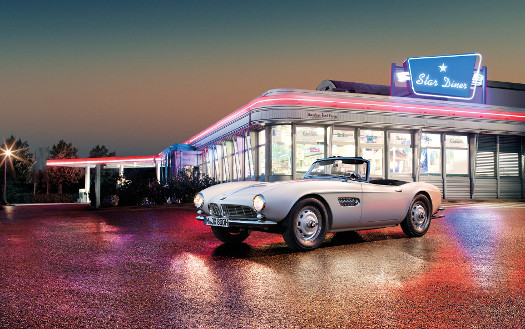
Source: BMW Group Classic
Edited by: Mike Foley
Published Sept. 13, 2016
Rate this article
View our terms of use and privacy policy
